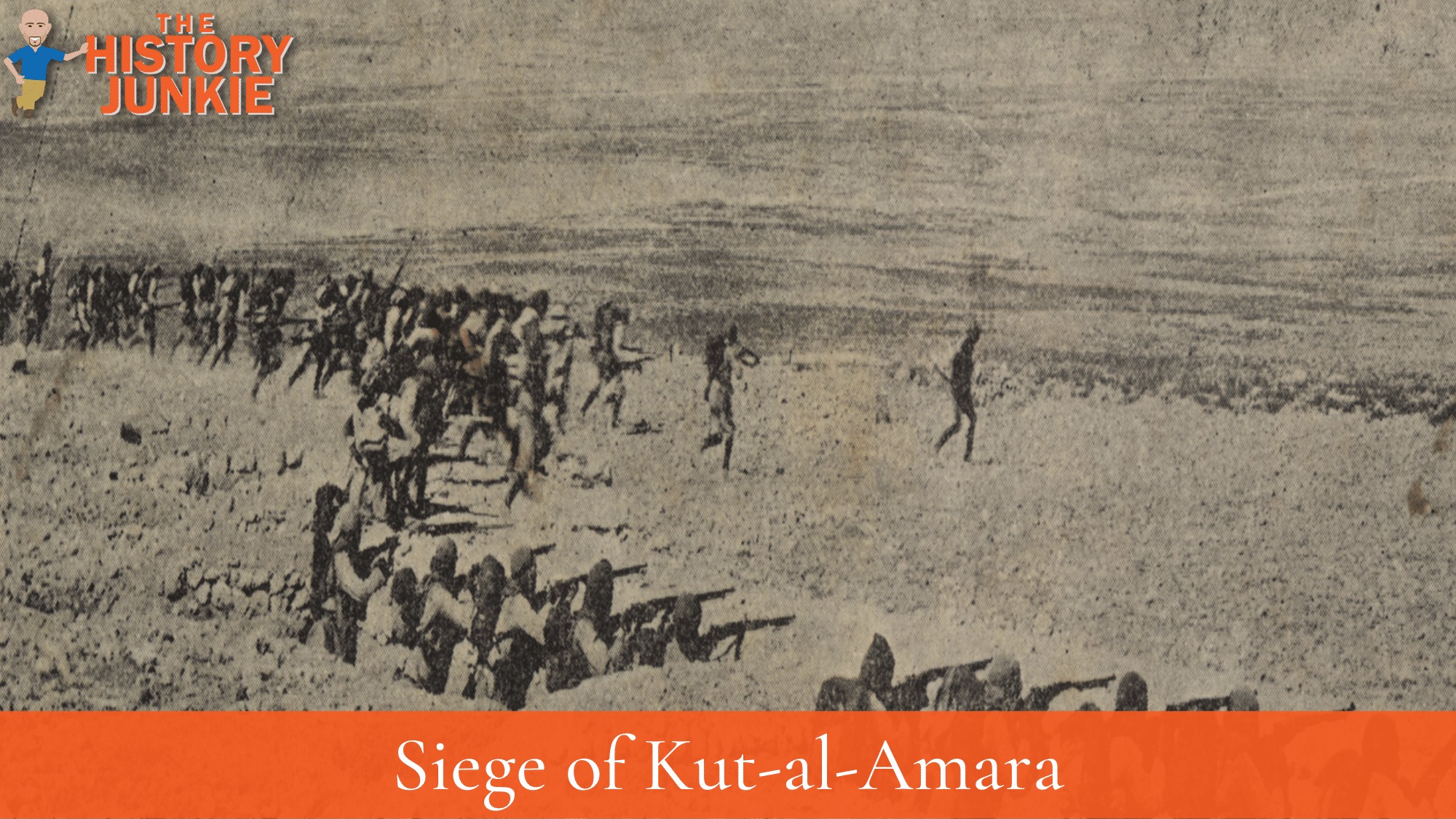After the British-Indian attack on Ctesiphon failed in November 1915, Sir Charles Townshend led his infantry force, the 6th (Poona) Division, on a difficult retreat back to Kut-al-Amara, arriving in early December.

Prelude
Townshend knew that his force was exhausted and unable to retreat further, so he resolved to stay and hold Kut, a town of key importance to the British presence in the region.
He was supported in this decision by regional Commander-in-Chief Sir John Nixon. However, the War Office in London favored a retreat even further south.
By the time this news reached Townshend, he was already under siege.
As a result, the defense of Kut, which is situated in a loop of the Tigris River, was put into place ahead of the arrival of the besieging Turkish force of 10,500 men on December 7.
However, Kut's very geographical formation effectively meant that Townshend and his men were bottled up.
The division's cavalry was sent back to Basra the day before the Turkish force arrived on December 6, 1915. The cavalry was not expected to be of much use during the siege, and it would have been a drain on scarce resources.
Nur-Ud-Din and Baron von der Goltz led the Turkish forces. Their instructions were simple but challenging: to drive the British out of Mesopotamia entirely.
Nur-Ud-Din and von der Goltz tried to break through Kut's defenses three times in December, but they were unsuccessful.
As a result, the Turks blockaded the town and sent forces to prevent British relief efforts from reaching Kut.
The Siege
The news of Townshend's setback stunned the British and Indian governments. They immediately resolved to send additional forces to the region, diverting them from the Western Front.
They also considered treating Palestine and Mesopotamia as a single front.
Townshend expected to be relieved quickly. He estimated that the garrison had enough supplies to last for a month, but this was based on the assumption of full daily rations.
When he was informed that a relief operation might take two months to assemble, Townshend proposed breaking out and retreating further south.
However, Nixon insisted that he remain at Kut to tie up as many Turkish forces as possible.
In January 1916, Sir Fenton Aylmer led the first British expedition to raise the blockade of Kut from Basra.
However, their efforts were repeatedly repulsed with heavy losses at Sheikh Sa'ad, the Wadi, and Hanna in January and again at Dujaila in March.
In April, a further relief operation was launched, this time led by Sir George Gorringe. Despite meeting von der Goltz and his Turkish Sixth Army and piercing their line 18 miles south of Kut, the expedition ran out of steam and was abandoned on April 22.
The Surrender
With no further hope of relief final attempt by the paddle steamer Julnar to reach the town with supplies having failed-Townshend requested and received an armistice pending surrender talks on April 26.
The Turks agreed to send 10 days of food to the garrison during the six-day armistice. While the talks were ongoing, the British took the opportunity to destroy anything of value in the town, knowing that they would soon surrender.
The British suffered an additional 23,000 casualties during the relief efforts, while the Turks lost approximately 10,000 men.
Khalil Pasha, the military governor of Baghdad, was sympathetic to Townshend's offer of money and a guarantee that his men would not be used again against the Ottoman Empire, but he was instructed by Minister of War Enver Pasha to demand unconditional surrender.
The British surrendered to the Turks on April 29, 1916, after running out of food and being ravaged by disease. The medical supplies they had were woefully inadequate to meet the needs of the sick and dying.
Aftermath
The surrender of Kut-al-Amara was the greatest humiliation in the history of the British Army. It was a significant morale boost for the Turks and Germany and undoubtedly weakened British influence in the Middle East.
Approximately 8,000 Anglo-Indian troops were taken prisoner, many of whom were sick. Townshend himself was also taken prisoner, but he was treated as an honored guest and eventually released to help with the Ottoman armistice negotiations.
In contrast, his men were treated with cruelty and routine brutality, and a significant percentage of them died in captivity.
